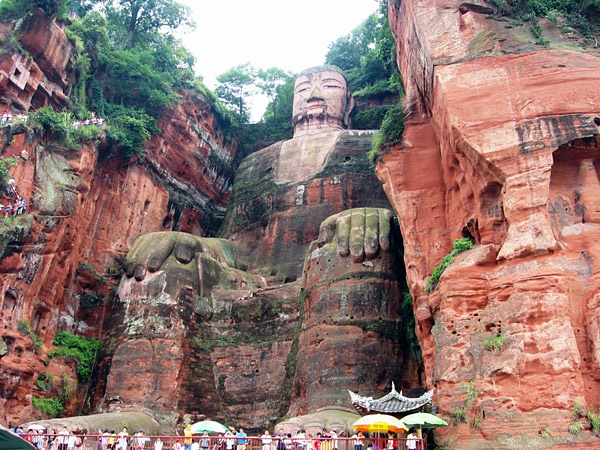Gautama Buddha (563?-483?) was born into an aristocratic family in what would be present-day Nepal. As a young man he fled and became part of a wandering, hermetic, ascetic tradition that existed within Hinduism at that time. He was one of the many who had renounced the material world and wandered and meditated in search of enlightenment and an understanding of the meaning of the world. Buddha, having reached just such an understanding, then preached his first sermon in the Deer Park in Sarnath.
At the time, the idea of karma and the cycle of endless rounds of birth, death and rebirth--much different than the Greco-Roman religious tradition--were well-established concepts in Hinduism. Buddha came to believe that all existence involved suffering and only correct knowledge and practice could annihilate suffering (ethical theism?) and achieve release from that cycle of birth/death/rebirth. The dhamma (dharma), Buddha's basic teachings, rejected asceticism and instead advocated a moderate life of contemplation to reach enlightenment. This involved control of passions and self-discipline, and an acceptance of the Four Noble Truths
that suffering is an ingrained part of existence; that the origin of suffering is craving for sensuality, acquisition of identity, and annihilation; that suffering can be ended; and that following the Noble Eightfold Path is the means to accomplish this.
To attain release involved behavior according to the "Noble Eightfold path"
- right views
- right aspirations
- right speech
- right conduct
- right livelihood
- right effort
- right mindedness
- right rapture
Buddha taught by story and example. Eventually, his teachings became popularized in a variety of different ways, including monastic establishments, with an enormous following across Asia. The high point came under the Emperor Ashoka, who had converted to Buddhism and sponsored its spread. By the third century CE, the sub-continent had seen the decline of Buddhism and re-consolidation of Hinduism as the dominant religion.
![]()
Some recommended online lectures and websites
- Wikipedia entry on Gautama Buddha; there is a separate entry on Buddhist philosophy.
- History of Buddhism
- Watch a short video that explains the differences between Buddha, Confucius and Lao Tzu by describing an ancient painting called the Vinegar Tasters.
- John T. Bullit, ed., A Sketch of the Buddha's Life: Readings from the Pali Canon
- National Geographic Bones of the Buddha (great documentary)
- For extra credit please suggest to your instructor a relevant website for this unit of the course. Send the title of the site, the URL and a brief explanation why you find the information interesting and applicable to the material being studied in this unit.
